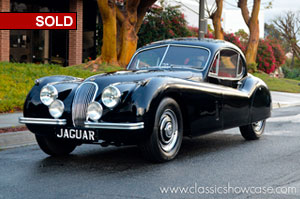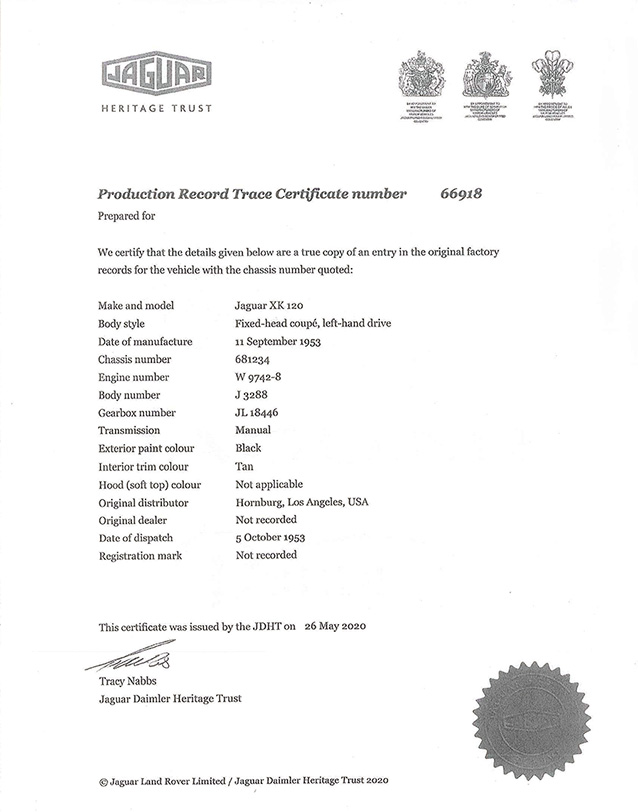1954 Jaguar XK-120 3.4 FHC
Specifications |
|
| Stock: | J54-234 |
| Current condition: | SHOW |
| Performance: | 3.4 litre inline six-cylinder engine, Twin SU Carbs, 160 HP at 5,200 RPM |
| Transmission: | 4-Speed Manual |
| Suspension: | Independent front torsion bar and rear leaf spring |
| Color exterior: | Black |
| Color interior: | Red |
| Mileage: | 3.698 showing |
| Wheels: | Steel Disc Wheels |
| Tires: | Vredestein Spirit Classics 185/16 |
| Brakes: | Hydraulic Drum Brakes |
| Vin #: | 681234 |
| Engine #: | W9742-8 |
| Gearbox #: | JL18446 |
| Other 1: | Body Number: J3288 |

Description
(SOLD)
History
While most contemporary observers of the Jaguar XK120 would be certain that it was born for greatness, it is surprising to consider that it was conceived and born as a limited-edition stopgap model. William Lyons assumed that the post-WWII fortune of his company, the recently re-named Jaguar Cars Ltd., would be made on the saloon cars that would sell so well in export markets, especially in the U.S. To that end, a new dual overhead-cam, six-cylinder, 160 horsepower engine was developed to power a new luxury sports four-door. As the new car was not yet ready, it was decided to launch the engine in a limited run of alloy-bodied roadsters. When shown at the 1948 Earl’s Court Motor Show, it created a sensation. Following a speed run on a Belgian highway in 1949, in which an XK120 ran 126 mph with its windshield on and 132 mph without, there was no doubt that this would become a regular production model. After 240 alloy cars were built, production was shifted to more easily manageable steel, which was now more widely available following post-war material shortages
Authenticity

